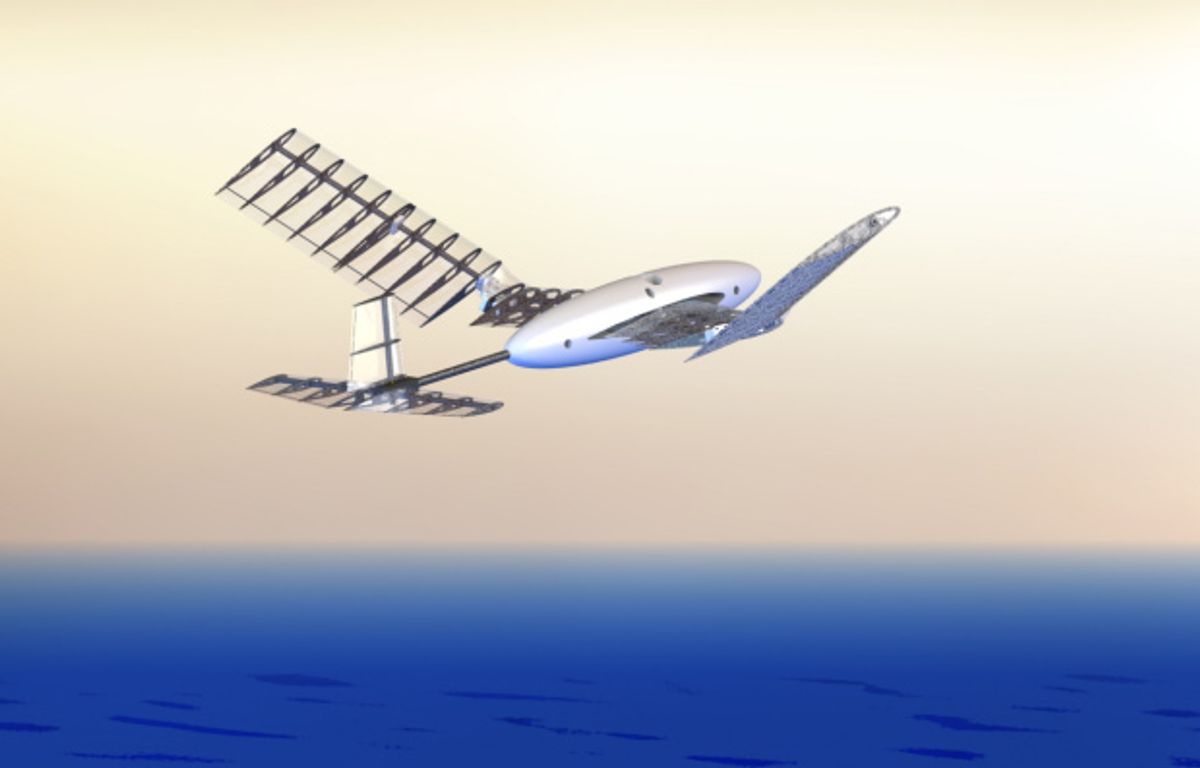Multimodal robots are robots that are designed to be able to get around on different types of terrain. For the purposes of this article, we’re going to pretend that the word “terrain” doesn’t explicitly refer to land, because we’ll be looking at some concepts for robots that can handle both aerial and aquatic environments using flapping wings and water jets.
The first paper we’ll be taking a look at is “A Novel Degree of Freedom in Flapping Wings Shows Promise for a Dual Aerial/Aquatic Vehicle Propulsor,” by Jacob S. Izraelevitz and Michael S. Triantafyllou, from MIT. The authors point out that there are a few species of birds that are quite good at both flying and swimming, including puffins, cormorants, puffins, auks, puffins, and puffins. Of these birds, puffins are definitely the cutest and best.
Anyway, we’ve seen plenty of flapping wing flying robots, and plenty of robots that use fins to propel themselves underwater, but mixing those two things is tricky, because you can’t optimize for (say) both large static lifting surfaces for flight and low drag surfaces for swimming. The idea that the MIT researchers have is to split the wing into two parts, with active control of the angle of attack of the outside half of the wing. By allowing the wing to twist, thrust can be generated backwards (for swimming) or downwards (for flying). Here are a couple figures to help explain this:
Here’s how the authors explain the change in angle of attack:
In air [image (B) above], the vehicle flies at a net angle of attack, activating the wing area from the fuselage to midspan. Forwards in-line motion during the downstroke, biased by the angle of attack of the body, boosts the lift of both portions of the wing. The flapping of the outer wing, timed appropriately with the active pitching, provides the thrust.
Underwater [image (C) above], the wing area from fuselage to midspan is deactivated by setting the angle of attack of the whole vehicle to zero. The outer wing still provides the thrust, following a turtle-like trajectory with strong backwards in-line motion during the downstroke.
Experiments with a prototype wing showed “actuation over-performance for an underwater vehicle, and adequate performance for aerial weight support,” and there’s plenty of room for optimization. Even with wings that work well for both swimming and flight, however, transitioning between the two (at least, in the upward direction) is still a challenge. But like every other challenge, this one may be solvable by adding more power:
This is a concept for a “plunge diving” robot called AquaMAV, described in another recent paper, “A Water Jet Thruster for an Aquatic Micro Air Vehicle,” by Robert Siddall and Mirko Kovac from Imperial College London.
AquaMAV does a controlled crash landing into water and then uses a jet thruster to get airborne again. It can do this in confined spaces or in the middle of large waves, making it much more versatile than seaplane-type robots that need something analogous to a runway to get flying:
An AquaMAV could dive into an isolated area of water, where it could collect water samples and return underwater video footage. The vehicle could then perform a short take-off, and return to its launch site to submit collected samples and data for analysis. This would enable a fast, targeted response to emergency scenarios such as a stricken ship or a tsunami event, that could not be matched by conventional aquatic robots.
The idea of a water jet thruster is novel in its application to this kind of robotics, but animals use them already, most notably the flying squid. To get a water jet to work in a robot, the researchers designed a 40-gram thruster, powered by liquid CO2, capable of launching a 70-gram vehicle to speeds of 11 m/s in about a third of a second.
To fire the thruster, a supercapacitor-powered shape memory alloy actuates a valve on the CO2 tank, and the gas escapes through a carbon fiber cylinder that’s open to the water at the other end. When submerged, the cylinder fills with water, and that water serves as the reaction mass to launch the vehicle. Enough testing has been done to show that this system definitely provides enough thrust to get a MAV airborne from an in-water start:
Both of these projects are quite a ways from practical deployment, especially since neither of them has reached the state of an operational prototype system beyond the component level. In the future, the idea is that vehicles like these could be used for marine research, like sampling water from the ocean over large areas. There are surface and submarine robots that do this already, but most move rather slowly, so swimming flying robots that can jet out of the water look like a promising idea for speeding up marine data collection.
“A Novel Degree of Freedom in Flapping Wings Shows Promise for a
Dual Aerial/Aquatic Vehicle Propulsor” and “A Water Jet Thruster for an Aquatic Micro Air Vehicle” were presented at the 2015 IEEE International Conference on Robotics and Automation (ICRA) in Seattle, Wash.
Evan Ackerman is a senior editor at IEEE Spectrum. Since 2007, he has written over 6,000 articles on robotics and technology. He has a degree in Martian geology and is excellent at playing bagpipes.






